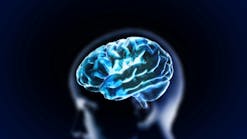Each year, well over one billion CBCs are performed in clinical laboratories around the world,1 and a significant percentage of them often end at the same place: a peripheral blood smear prepared on a glass slide and stained with a Romanowsky stain. This smear must then be reviewed by a highly trained medical technologist, using a procedure where CVs (coefficients of variation) are measured in double digits instead of decimal points, due to the high degree of variability among technologists and the small statistical sampling used in the manual white blood cell (WBC) differential.2 The manual WBC differential, which most often includes red blood cell morphological characterization as well as platelet estimation and morphology, is a costly, time-consuming and inconsistent laboratory procedure. Recent advances in image analysis and automation have resulted in instruments which can now automate the manual differential, and in doing so provide an unprecedented level of efficiency, consistency and connectivity. In this article we will refer to this technology as digital morphology. However it is performed, the manual differential continues to be an indispensable complement to the hematology cell analyzer and has a major impact on workflow, cost, quality, and patient care.
A problematic procedure
The manual differential is a difficult and labor-intensive procedure, typically taking from two to ten minutes per smear to perform. It is a lab procedure that requires a strong combination of experience and training in order to achieve an acceptable level of competency. The recommended protocol for performing the manual differential procedure is well defined in the literature,3 but the specific identification of individual white cells are made by the subjective interpretation of various cellular features by a laboratorian. This identification is often influenced by how a cell appears relative to other cells found on the slide, or what is already known about the patient. Because disagreement on a cell’s identification between laboratorians or pathologists is not uncommon, labs struggle to maintain accuracy and improve the consistency of their results throughout their organization. In years past hematology labs were often staffed with dedicated morphology experts working closely with hematopathologists. Today, many labs are being organized into a core lab environment in order to centralize high volume routine testing and achieve operational efficiencies and flexibility. Unfortunately, this often results in a dilution of morphology expertise.
When we combine the increasing economic pressure to reduce costs and increase billable tests per FTE, it is no surprise that all laboratories want to reduce the number, and increase the efficiency of the manual differential. As skilled morphology experts retire, and there is a decreasing pool of morphologically adept laboratorians for hire, labs must figure out how to continue to maintain the quality of the manual differential. Today, as health networks are being formed, and services are being centralized, there is also an increasing need for remote access to blood cell images over networks and between facilities. Long term storage and accessibility of images can provide new tools for the lab, the pathologist and the clinician.
Thanks to accelerating advances in computer processing, storage, and information technology, as well as major improvements in image analysis and artificial neural networks, the hematology lab is now able to significantly improve its efficiency and proficiency in the performance of the manual differential.
Behind digital morphology
Digital morphology systems available in the market utilize both hardware and software to deliver value to the lab. The hardware design of these analyzers must consist of an extremely high quality optical path, including a microscope, oil objectives and digital camera They must also have a fast, reliable slide-handling mechanism capable of high speed and precise automated-stage and fine-focusing movements. This results in WBC and red blood cell (RBC) images being automatically located and captured at high speed, saving valuable laboratorian time. It is very important, however, that the resulting captured images are not only good enough for the system to pre-classify. They also must pass the scrutiny of the laboratorian and the hematopathologist, clearly allowing the visualization of fine cellular detail such as inclusions on a computer monitor. Once this optical and mechanical performance has been established, it is up to the software to deliver on accuracy, usability and connectivity. The major software modules can be described as the Artificial Neural Network (ANN) for accurate cell image analysis; a Graphical User Interface (GUI) that is easy to use; supplies tools to assist the laboratorian; database management for the sharing, storage and searching of images; multiple applications for a variety of sample types (e.g., body fluids); specialized software for the remote review of images and competency assessment; and IT connectivity to allow flexible access among locations and real-time access to experts.
Artificial neural networks
Artificial neural networks are information processing paradigms that simulate the way the human brain processes information. They are relatively crude models based on the neural structure of the brain that are composed of a large number of highly interconnected processing elements (neurons) working together to solve specific problems. ANNs grew out of research in Artificial Intelligence (AI) and its attempt to mimic the capacity to learn, as seen in biological neural systems. ANNs learn through training-by-example, and are well suited to problems that people are good at solving, but traditional mathematical methods are not. They are exceptionally good in pattern recognition and classification because of their ability to generalize and make decisions about imprecise data.
The human brain contains ~1012 neurons. Each neuron can connect with up to 200,000 other neurons, although 1,000 to 10,000 is typical. A neuron consists of dendrites, axons and synapses (Figure 1). Dendrites are receivers of signals from other neurons, synapses convert the incoming signal to a potential in the cell body, and axons are transmitters of signals. The brain basically learns from experience, and the learning process occurs by changing the effectiveness of the synapses so that the influence of one neuron on another changes.
Figure 2 shows a fundamental representation of an artificial neuron, simulating the four basic functions of a natural neuron. These artificial neurons are called processing elements, represented with the j in the Figure. The various inputs, represented by Wij, are multiplied by a connection weight, and in the simplest case, summed and fed through a transfer function to generate a result, an output Wjk. When multiple processing elements are connected and combined into one or more layers, complex problems can be solved.
Artificial neural networks are trained on thousands of known cell images, each representing expert consensus. Hundreds of different features, for example, shape, color, size, nuclear to cytoplasmic ratio, etc., are identified for each cell and are used in the determination of the cell’s classification. The different features represent input data to the ANN, and the cell pre-classification represents the output data from the ANN (Figure 3). As the ANN is trained on more and more varieties of cell types, the instrument’s pre-classification accuracy increases, the number of changes required by the laboratorian is reduced.4
Other software considerations: the user interface
Sophisticated technology is useless unless it can be employed routinely and with confidence by all levels of user. Laboratorians or pathologists using digital images must have a high degree of confidence that the static image presented is of sufficient quality to allow them to differentiate minute, cellular inclusions. The software must be easy to learn and efficient to use, allowing fast review and quick decisions. It is important that this technology provide significant new tools that improve users’ speed and confidence in the results they report and ease the physical demands of performing microscopic analysis for eight hours.
The design of the GUI must be intuitive so that less computer-savvy users are comfortable, and so that cell verification is fast and easy. Using digital images allows the development of tools that can help laboratorians improve their accuracy in cell identification. Features such as viewing all cells together and cell classes side-by-side; access to a cell reference library; the patient’s historical images; and the ability for multiple users to collaborate in real-time from any location work together to reduce the inherent subjectivity of morphological analysis. Additionally, specialized competency and educational software can result in a more efficient and effective approach to training laboratorians in morphology.5 Although improving accuracy and precision is paramount, it is also important that the GUI design results in a tangible improvement in the speed of the smear review.
For a manual procedure such as the differential, which is impacted by shortages of skilled labor, time savings is a major benefit from this technology.6 The manual review of smears in the lab consists of several sub-processes which take up valuable time. These include reviewing the CBC result, setting up the slide on a microscope, finding the proper monolayer of cells, adding oil, locating and identifying 100 WBCs, evaluating RBC and platelet morphology, and entering the data into the Laboratory Information System (LIS) terminal. Throughout a shift laboratorians will also come across slides which require Pathology review, for which they must supply comments and arrange for the transport of the slide to Pathology.
When laboratorians can view all cells on a single computer screen, they can make immediate assessments of whether or not a sample is abnormal enough to warrant closer inspection. Or, the system can allow them to quickly and simply confirm the cell counter’s results and flags. This confirmation process may take 30 to 60 seconds rather than the average of 5 to 6 minutes currently being spent. The tasks involved in handling slides being sent for a pathologist’s review are eliminated altogether because the images reside in a database and can be accessed remotely and in real-time by the pathologist.
Digital imaging and your existing network
It is arguably in the area of IT and it’s connectivity to digital morphology systems within and between related facilities, that the greatest benefits to the lab, clinician and patient lie. Increasingly, healthcare providers are forming alliances and partnerships among themselves. These can include multiple hospitals of varying sizes and specialties, small satellite labs or clinics, and shared, centralized clinical services and pathology consultation. Fortunately, digital morphology products are either available, or in development, to accommodate the needs of facilities of all sizes. Figure 4 represents the interconnectivity between facilities, laboratories, clinicians and patients.
In the hematology lab, remote small facilities present significant operational challenges, especially in the areas of ensuring competency throughout the organization and in keeping turnaround time to a minimum. Using digital morphology together with their existing network infrastructure allows organizations to centralize morphology expertise, guaranteeing consistency.7
Using a network, it is possible for multiple analyzers from different facilities to share a common image database, and for that database to be accessed by any number of remote users. These users may assist in performing the reviews, or provide consultation services.
In many facilities today, especially smaller ones, if a smear has been reviewed by a laboratorian and is deemed to require further review by a pathologist, turnaround time can suffer. The slide must be transported to where the pathologist is located, which can delay feedback to the clinician by hours or days. When the slide in question is many miles away, there are transportation costs in addition to the delay in result reporting. With digital systems, the ultimate beneficiary in these situations is the patient, who can now expect faster and more consistent results, reduced wait time, and faster treatment decisions.
Digital morphology is the answer to many pressing operational, quality, and patient care needs in today’s clinical hematology laboratory. The manual WBC differential can now be improved in terms of performance time, accuracy, and consistency. Additionally, when incorporated into a Health Network and their existing IT infrastructure, real-time collaboration is now possible, enabling significant improvement in patient care.
Ron Hagner, MS, MT(ASCP), is Vice President, Sales and Business Development, for CellaVision (www.cellavision.com) and has been with the company since 2001. He has more than 30 years experience in marketing in clinical hematology, specializing in digital morphology systems for the last 13 years.
References
- CellaVision AB (Lund, Sweden) 2010 Annual Report, page 9
- Rumke CL. Imprecision of ratio derived differential leucocyte counts. Blood Cells.1985;11:311314, 315.
- Clinical and Laboratory Standards Institute. Reference leukocyte (WBC) differential count (proportional) and evaluation of instrument methods; Approved Standard. Second Edition. CLSI document H20-A2.
- Hagner R, Wilson P. Automated digital cell morphology. Chapter 5, Clinical Diagnostic Technology: The Total Testing Process, Volume 3 AACC Press
- Horiuchi Y. et al. The use of CellaVision Competency Software for external quality assessment and continuing professional development, J Clinical Pathology, 2011, 64:610-617
- Kratz A. et al. Performance evaluation of the CellaVision DM96 system. Am. J Clin Pathol. 2005;124:770-781.
- Langstaff D. New Use of Laboratory Technology Speeds Up and Increases Accuracy of Blood Morphology Reporting. www.cellavision.com/filearchive/5/5660/MM-068_Customer%20case_Hamilton.pdf. Accessed April 2, 2012.





